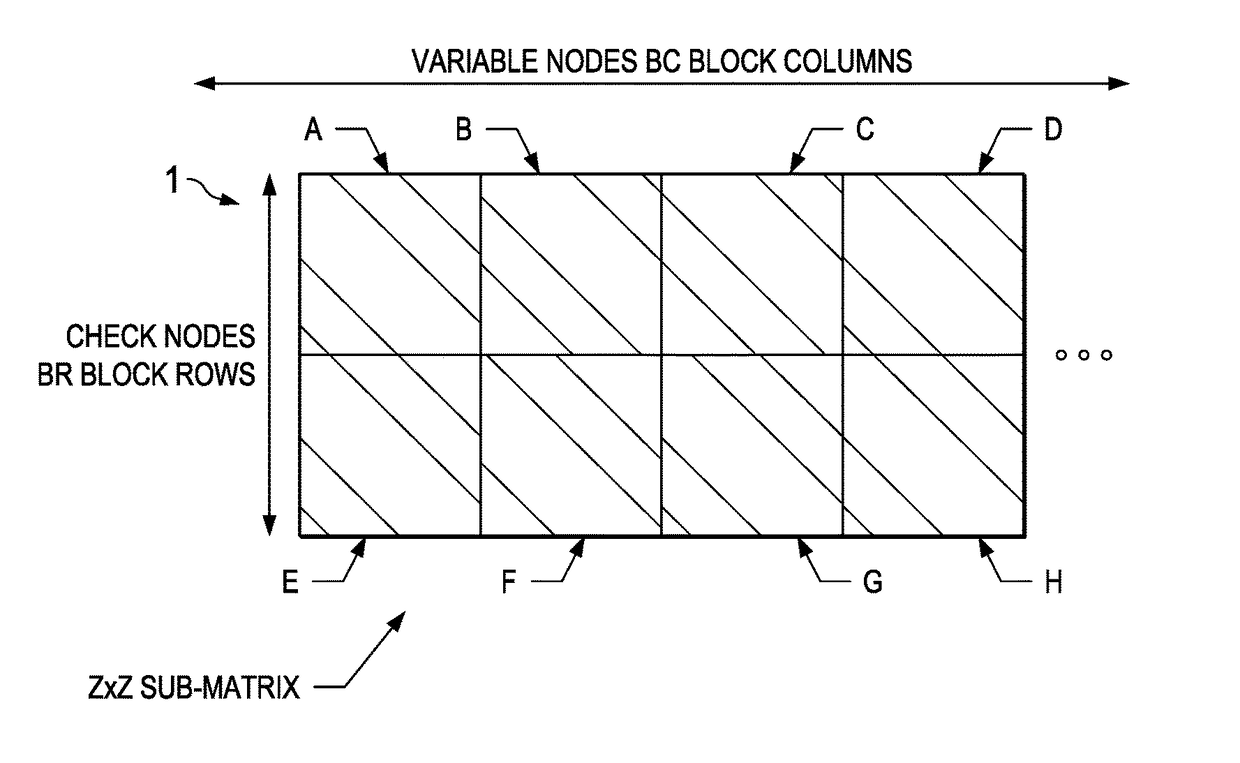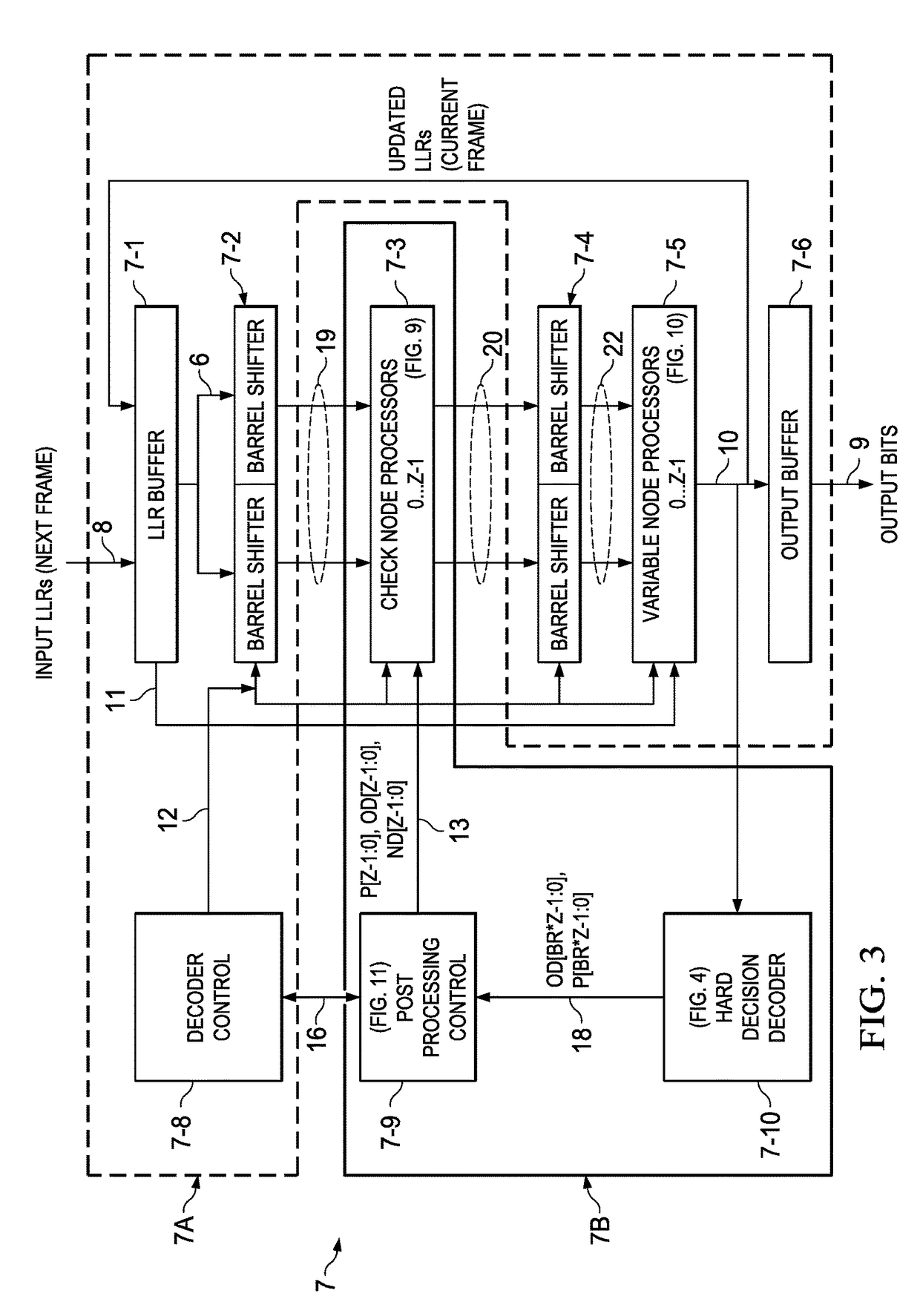LDPC post-processor architecture and method for low error floor conditions
a post-processor and low error floor technology, applied in the field of low density parity check (ldpc) decoder hardware and software additions, can solve the problems of low error rate, error floor issues, decoders being trapped, etc., and achieve the effect of low error ra
- Summary
- Abstract
- Description
- Claims
- Application Information
AI Technical Summary
Benefits of technology
Problems solved by technology
Method used
Image
Examples
Embodiment Construction
[0054]This invention describes hardware that implements a new post-processing algorithm for addition to a high-throughput LDPC decoder. One embodiment of the new hardware post-processor implementation is designed for error floor mitigation in a parallel QC-LDPC (“Quasi-Cyclic” LDPC) decoder. The post-processing algorithm injects noise of controllable duration (and also controllable magnitude, if desired) into the decoder to help the decoder output converge to a valid codeword. The post-processing algorithm can be applied to QC-LDPC decoder architectures and also to other types of decoder architectures. In one embodiment, the post-processing algorithm and hardware may operate to lower the error floor by a factor of nearly 10.
[0055]As previously indicated, some LDPC codes are known to exhibit error floors (i.e. a reduction in the slope of the bit error rate (BER) versus channel signal-to-noise ratio (SNR) curve) at low BER levels. This implies that in the error floor region, a large i...
PUM
 Login to View More
Login to View More Abstract
Description
Claims
Application Information
 Login to View More
Login to View More - R&D
- Intellectual Property
- Life Sciences
- Materials
- Tech Scout
- Unparalleled Data Quality
- Higher Quality Content
- 60% Fewer Hallucinations
Browse by: Latest US Patents, China's latest patents, Technical Efficacy Thesaurus, Application Domain, Technology Topic, Popular Technical Reports.
© 2025 PatSnap. All rights reserved.Legal|Privacy policy|Modern Slavery Act Transparency Statement|Sitemap|About US| Contact US: help@patsnap.com



